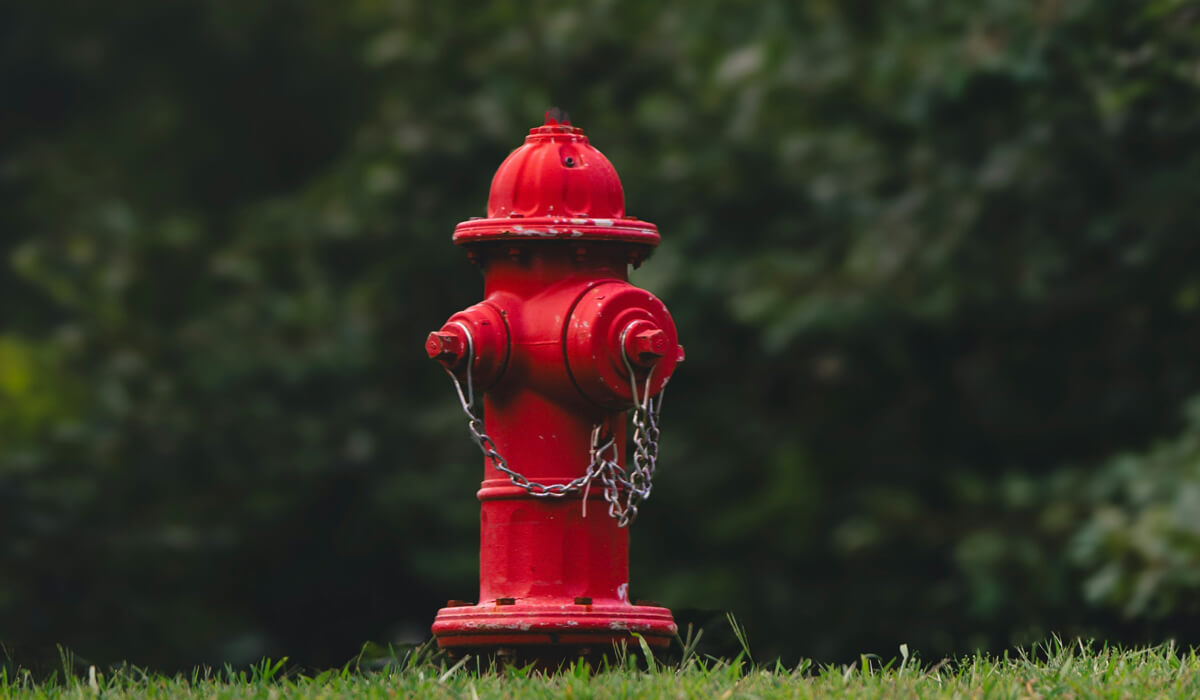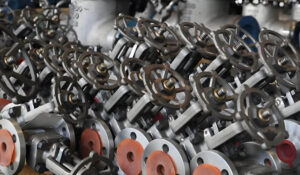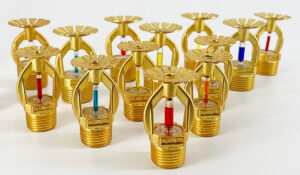Введение в пожарные гидранты и их важность
Пожарные гидранты - это одна из тех вещей, мимо которых мы проходим каждый день, не задумываясь о них. Однако когда случается беда, они становятся спасательным кругом. Пожарный гидрант - это не просто элемент уличной мебели, это жизненно важное устройство безопасности, предназначенное для быстрой подачи большого количества воды, когда пожарные нуждаются в ней больше всего. Без гидрантов борьба с городскими и промышленными пожарами была бы практически невозможна.
Они устанавливаются в стратегически важных районах, на заводах и в коммерческих зонах, подключаясь непосредственно к городской системе водоснабжения. Обеспечивая мгновенный доступ к воде, они позволяют пожарным реагировать быстро и эффективно. Во многих отношениях гидранты - это молчаливые стражи наших улиц, готовые к чрезвычайным ситуациям.
Понимание различных типы пожарных гидрантов является незаменимым помощником для градостроителей, инженеров и специалистов по безопасности. Каждый тип предназначен для определенных условий окружающей среды, климата и пожарной опасности. Например, одни гидранты рассчитаны на морозную зиму, а другие размещаются под землей для экономии места.
В этой статье мы рассмотрим основные типы пожарных гидрантов, принцип их работы, материалы, из которых они изготовлены, потребности в обслуживании и даже предстоящие инновации в конструкции гидрантов. Если вы когда-нибудь интересовались этими красными или желтыми столбиками на тротуаре, то сейчас вы узнаете, насколько они сложны и важны.
Типы пожарных гидрантов
Внешне гидранты могут выглядеть одинаково, но их внутренняя конструкция и функции сильно различаются. Давайте разберем наиболее важные типы.
Пожарный гидрант с мокрой бочкой
Гидрант с мокрой бочкой - самый распространенный тип, который можно встретить в теплом климате. В этой конструкции вода все время остается внутри бочки гидранта. Каждый выход имеет свой собственный клапан, поэтому пожарные могут открыть один или несколько патрубков, не отключая всю систему.
Поскольку в гидранте постоянно поддерживается давление, гидранты с мокрым стволом обеспечивают очень быстрый доступ к воде. Это делает их идеальными для районов, где скорость работы имеет решающее значение, например, для густонаселенных городских центров. Однако, поскольку вода остается в бочке, они не подходят для регионов с низкими температурами, так как лед может перекрыть поток или повредить гидрант.
Эти гидранты обычно изготавливаются из ковкого чугуна с бронзовыми седлами для предотвращения износа. Простота использования и легкость в обслуживании делают их популярными в странах с теплым климатом, таких как Калифорния, Южная Азия и Ближний Восток.
Пожарный гидрант с сухим стволом
Гидранты с сухой бочкой предназначены для холодных регионов, где замерзание воды может стать серьезной проблемой. В отличие от мокрых бочек, вода в сухом гидранте не остается в бочке. Вместо этого она хранится ниже уровня земли, ниже линии промерзания.
Когда пожарный открывает клапан, вода поднимается в гидрант. После использования бочка автоматически сливается, гарантируя, что внутри не останется воды, которая может замерзнуть. Эта продуманная конструкция позволяет гидрантам работать даже в суровые зимы в таких странах, как Канада, Северная Европа или Северный Китай.
Гидранты с сухим стволом более сложны и требуют тщательной установки. Обычно они включают в себя дренажный клапан, кольцо седла и рабочую гайку. Хотя их обслуживание обходится несколько дороже, они незаменимы в климатических условиях, где замерзшая вода может означать разницу между жизнью и смертью во время пожара.
Гидрантные системыГидранты со стояками - это не те типичные гидранты, которые вы видите на тротуарах. Это стационарные системы водоснабжения, установленные внутри зданий, промышленных предприятий или высоких сооружений. Они позволяют пожарным подключать шланги непосредственно внутри объекта, избавляя их от необходимости тащить тяжелое оборудование с улицы.
Они часто встречаются в торговых центрах, многоэтажных квартирах, на складах и в аэропортах. В таких условиях система гидрантов с подставкой сокращает время реагирования и повышает безопасность. По сути, это гидрант, размещенный в помещении и предназначенный для быстрого пожаротушения внутри помещений.
Подземный пожарный гидрант
Подземные гидранты устанавливаются ниже уровня дороги или тротуара. Доступ к ним осуществляется через крышку или клапанную коробку на уровне поверхности. Пожарные подсоединяют шланги, открывая крышку и подключая их непосредственно к выходу гидранта.
Этот вид гидрантов популярен в местах, где традиционные гидранты мешают движению пешеходов или транспорта. Они также менее подвержены вандализму, поскольку остаются вне поля зрения. Тем не менее, поскольку они скрыты, необходимо регулярно проверять их на предмет исправности.
Настенный/встроенный пожарный гидрант
Настенные гидранты, иногда называемые гидрантами заподлицо, монтируются на стенах или заподлицо с землей. Они особенно полезны в местах с ограниченным пространством, например на промышленных предприятиях, в туннелях или аэропортах.
Они обеспечивают быстрый доступ к воде, сохраняя при этом чистый, незагроможденный внешний вид. Инженеры часто выбирают такую конструкцию для мест, где традиционные надземные гидранты могут представлять опасность или выглядеть неуместно.
Основные различия между типами пожарных гидрантов
| Характеристика | Мокрая бочка | Сухая бочка | Под землей | Настенный/встраиваемый | Стояк |
|---|---|---|---|---|---|
| Вода внутри бочки | Да | Нет | Нет | Нет | Нет |
| Подходящий климат | Теплый | Холод | Все | Все | В помещении |
| Видимость | Высокий | Высокий | Низкий | Низкий | Средний |
| Техническое обслуживание | Легко | Средний | Высокий | Средний | Средний |
Эти различия подчеркивают, что выбор правильного типа гидранта в значительной степени зависит от местоположения, климата и стратегии пожаротушения.
Материалы, используемые при строительстве пожарных гидрантов
Пожарные гидранты изготавливаются таким образом, чтобы выдерживать экстремальное давление, интенсивное использование и суровые условия окружающей среды. Распространенные материалы включают:
- Ковкий чугун - Прочные, долговечные и устойчивые к высокому давлению.
- Компоненты из бронзы/латуни - Предотвращает коррозию клапанов и седел.
- Чугун - Традиционный, но более хрупкий по сравнению с ковким чугуном.
- Композитные материалы - В новых гидрантах иногда используются композитные материалы для облегчения веса и устойчивости к ржавчине.
Выбор материала часто зависит от стоимости, местного климата и предполагаемой частоты использования.
Как работают пожарные гидранты при тушении пожаров
Во время пожара каждая секунда на счету. Гидранты подключаются непосредственно к системе водоснабжения. Пожарные подсоединяют шланги к выходным отверстиям, открывают клапаны, и вода под давлением вытекает наружу.
При масштабных пожарах может быть подключено сразу несколько гидрантов. Гидранты часто наносятся на городские планы, чтобы в радиусе 300-500 футов от здания всегда был один гидрант.
Их конструкция также позволяет регулировать давление. В некоторых системах гидранты соединены с насосами для усиления потока, что очень важно для пожаротушения на высотных зданиях.
Глобальные стандарты и правила для пожарных гидрантов
В разных странах установлены свои правила относительно конструкции гидрантов, их цветовой маркировки и расстояния между ними. Например:
- NFPA (Национальная ассоциация противопожарной защиты - США) требует установки гидрантов через каждые 500 футов в жилых районах.
- Европейские стандарты (EN 14384/14339) установить правила для подземных и надземных гидрантов.
- Стандарты BIS Индии регулировать расстояние между гидрантами в промышленных зонах.
Следование этим стандартам обеспечивает единообразие, безопасность и надежность работы во всем мире.
Обслуживание и проверка различных пожарных гидрантов
Гидранты необходимо регулярно проверять, чтобы обеспечить их работоспособность в случае необходимости. Типичные проверки включают:
- Испытание давлением и расходом
- Смазка клапанов
- Проверка дренажа
- Очистка крышки и выпускного отверстия
- Окраска для предотвращения коррозии
Муниципалитеты обычно проверяют гидранты дважды в год. Плохо обслуживаемые гидранты могут стать причиной трагических задержек во время пожара, поэтому профилактика крайне важна.
Распространенные проблемы и их решение с пожарными гидрантами
К числу часто встречающихся проблем относятся:
- Заедание клапана - Решается смазкой или заменой.
- Коррозия - Контролируется с помощью защитных покрытий.
- Вандализм - Предотвращается блокировкой колпачков.
- Низкое давление воды - Требуется поддержка насоса или модернизация трубопровода.
Устраняя эти проблемы на ранней стадии, пожарные службы могут обеспечить надежную работу гидрантов в чрезвычайных ситуациях.
Преимущества использования правильного типа пожарного гидранта
Выбор правильного типа гидранта гарантирует:
- Более быстрое реагирование пожарных
- Надежное водоснабжение в местных условиях
- Снижение затрат на техническое обслуживание
- Повышение безопасности как для гражданских лиц, так и для пожарных
Правильно выбранный гидрант может означать разницу между незначительным инцидентом и катастрофическими потерями.
Будущие тенденции и инновации в технологии пожарных гидрантов
Технологии меняют конструкцию гидрантов. Современные инновации включают:
- Умные гидранты - Оснащен датчиками для контроля давления, утечек и использования.
- Экологически чистые материалы - Легкие композиты, пригодные для вторичной переработки.
- Картирование GPS - Помогает пожарным мгновенно найти ближайший гидрант.
- Дистанционное управление - Усовершенствованные клапаны с электронным управлением.
Эти усовершенствования обещают сделать гидранты более безопасными, эффективными и простыми в обслуживании.
Часто задаваемые вопросы о типах пожарных гидрантов
В чем основное различие между мокрыми и сухими пожарными гидрантами?
Мокрые гидранты всегда содержат воду, в то время как сухие гидранты остаются пустыми до тех пор, пока не активируются, что делает их пригодными для использования в морозном климате.
Почему некоторые пожарные гидранты окрашены в разные цвета?
Цвета указывают на уровень давления воды. Например, красный цвет часто означает низкий расход, а синий - высокую производительность.
Как часто следует проверять пожарные гидранты?
Большинство гидрантов требуют проверки два раза в год, хотя в зонах повышенного риска их можно проверять чаще.
Можно ли использовать пожарные гидранты не только для пожаротушения?
Да, иногда они поставляют воду для уборки улиц или строительства, но несанкционированное использование незаконно.
Что произойдет, если гидрант будет поврежден во время аварии?
Городские власти быстро ремонтируют или заменяют его, чтобы обеспечить безопасность. Расходы обычно выставляются ответственной стороне.
Являются ли подземные гидранты такими же надежными, как и наземные?
Да, если за ними правильно ухаживать. Они требуют более частых проверок, поскольку скрыты и их труднее обнаружить в случае неисправности.
Заключение
Пожарные гидранты, возможно, не привлекают особого внимания, но они жизненно важны для общественной безопасности. Каждый тип пожарных гидрантов - от мокрых стволов в солнечных городах до сухих стволов в заснеженных регионах - разработан специально. Правильное обслуживание, соблюдение правил и продуманные инновации обеспечивают постоянную готовность этих спасательных устройств к стихийным бедствиям.
Зная типы, материалы и функции гидрантов, жители могут лучше подготовиться к чрезвычайным ситуациям. Независимо от того, видны ли гидранты на тротуарах или спрятаны под землей, они будут оставаться безмолвными защитниками, готовыми доставить воду в самый нужный момент.



